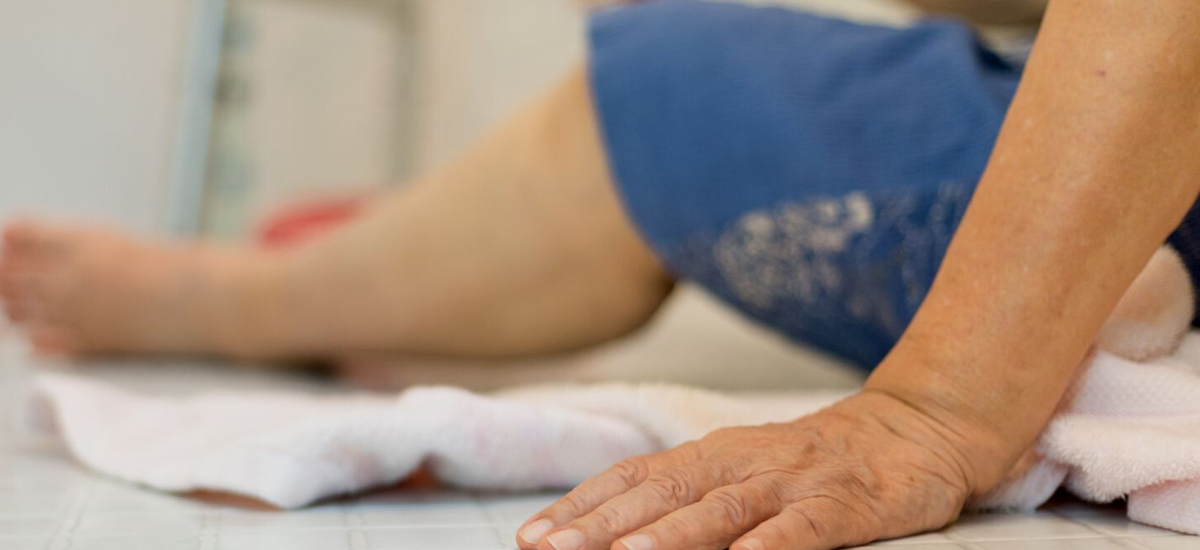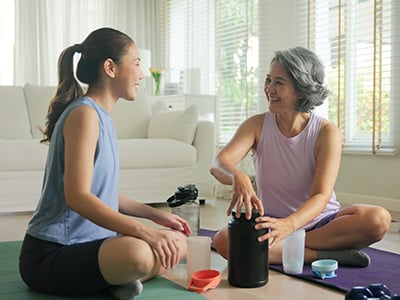Published on 25 January 2023
About one-third of people aged 65 and above in Singapore have suffered a fall at least once, with 40% of these falls accounting for injury-related deaths.
When an older adult takes a tumble, the consequences can be dire, and even fatal.
After all, the elderly is more susceptible to severe injuries during a fall as their bones are often porous and fragile due to conditions like osteoporosis.
“Falls are very dangerous for older adults since it can result in many serious consequences such as bleeding in the brain and devastating fractures which can cause the person to lose their ability to be independent, reduce their mobility, and even death,” said Dr Beatrix Wong, Consultant, Division of Geriatric Medicine, Department of Medicine, National University Hospital (NUH).
The harm caused by falling, however, can affect more than just a person’s physical well-being. It can also affect their mental, emotional and psychological state, as Dr Wong explained.
“It could cause one to have a fear of falling, which leads to anxiety, isolation, depression, and restricted mobility. Therefore, the psychological effects of falling can be just as detrimental as the physical wounds sustained,” added Dr Wong.
In order to minimise the risk of falling among the elderly, it is critical to fall-proof their homes. Here are some measures that can be implemented at home to provide a safer, fall-proof environment:
Installing neon strips along high risk areas such as the edge of the stairs and raised curbs.
Installing grab bars in areas like the toilet.
Implementing non-slip floor coverings such as rubber mats in the toilet and kitchen.
Installing night lights.
Using a sturdy commode or shower chair if needed, to make shower time more convenient and safe.
Keeping commonly used items on lower shelves to prevent the need for climbing frequently.
While these pointers are a good start to fall-proof a home, it is also important to consult an occupational therapist to conduct a formal home safety assessment. Alternatively, households with elderly can apply to the Housing and Development Board’s (HDB) EASE programme to make improvements around the home.
There are multiple factors that contribute to a higher incidence of falls in older adults – this can include joint pain, lower limb pain or numbness, locking of knees, difficulty in rising from a chair, unsteady gait, difficulty in walking, poor balance, deformities in the feet, and frailty.
Dr Wong added, “Deterioration in eyesight, often due to cataracts, and medications that may cause drowsiness or dizziness, can also increase the risk of falls.”
Apart from making changes around the home, ensuring older adults remain physically able is just as important.
“One would need to incorporate exercises which include balance, strengthening, endurance and flexibility,” said Dr Wong. “These exercises should also be individualised and progressive.”
Knowing what to do when a fall occurs could save lives
Sometimes, despite our best efforts to prevent it from happening, falls can still occur.
In such an event, being able to identify the severity of the fall, as well as knowing what to do in the immediate aftermath can save lives.
“If the patient is well, conscious, and in not much pain, caregivers can assess whether the patient is able to get up to walk to a more comfortable surface like a bed or chair,” Dr Wong shared.
“If the patient is unable to do so, or is in pain, caregivers should call for help immediately, while allowing the patient to rest on a comfortable surface like a cushion or pillow.”
“Do look out for any physical injuries or signs of fractures as well. This could be at dangerous areas of the body like the neck, spine, and hip. Seek medical help if there is any pain in any of these areas.”
For bleeding wounds, apply pressure with a clean cloth, and call for help, if necessary.
Beyond checking for superficial wounds and signs of physical injury, it is also important to do an assessment of the person’s mental state and acuity – seek medical attention immediately if he or she appears confused and/or disoriented.
Falls among the elderly can occur any time – but with an active lifestyle, a balanced nutrition, fall-proofing of the house, and the right actions taken after it happens, the risks and dangers associated with falls can be greatly reduced, and could potentially save lives.
In consultation with Dr Beatrix, Consultant, Division of Geriatric Medicine, Department of Medicine, NUH.
Download the full infographics here.




